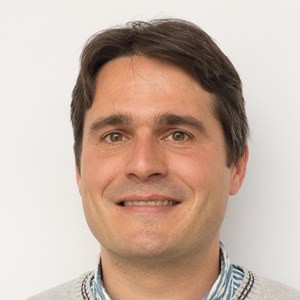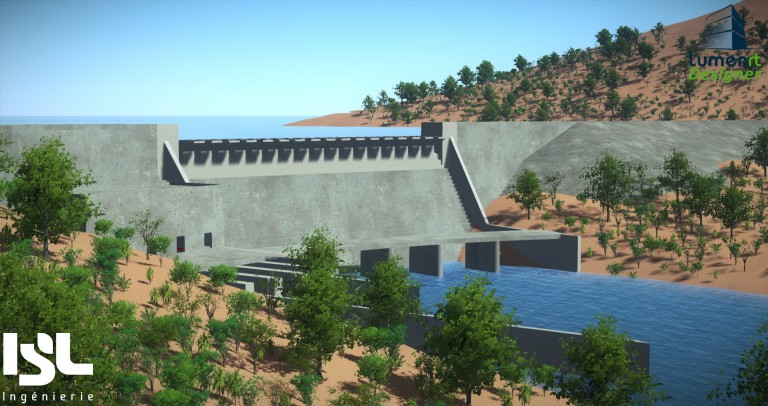Partner of the month interview: ISL Ingénierie
- 19 January 2022
- Francien Horrevorts
- Flood Defence
One of the strengths of Polder2C’s is that it is an international project, where many parties work together, share expert skills and facilitate knowledge transfer. A total of thirteen partners from the Netherlands, Belgium, France and the United Kingdom participate in the project. Each month we put one of our partners in the spotlight. In January our partner of the month is ISL Ingénierie.
ISL Ingénierie
ISL Ingénierie is a French engineering company, amongst the leaders in hydraulic works and dam sectors. ISL is largely experienced in the field of marine and fluvial flood control, with respect to infrastructures, management and legal aspects. Both Cédrine Alleon, Sea and Seashore Dept Manager, and Nicolas Nérincx, Project Manager DN&T, represent ISL Ingénierie to answer our questions.


What is the core business of your organisation?
ISL Ingénierie is an engineering company delivering studies, master plans, designs, audit and consulting, and technical support in the fields of:
- dams
- hydraulic infrastructures
- water management
- hydrology and hydraulics
- coastal engineering
- energy
- environment
- French related legislation
What is the role of your organisation and you as a person in the Polder2C’s project?
ISL is mainly involved in the activities of the Polder2C’s project related to flood defense, but also indirectly involved in other areas. For example, we slightly contribute to emergency response for sharing emergency protocols from French waterbodies, and are also involved in the knowledge infrastructure with contributing to set up the data management system, in which Nicolas is assiduously involved.
In the field of flood defense, ISL is part of several subgroups working on better understanding the flood defense behavior under external exposure, like overflow or overtopping. In these sub-working group, we are developing hydraulic models of the flow patterns (hydraulic modelling sub-group), and a new erosion tool with the support of several partners (erosion subgroup). Cédrine is coordinating the inputs from ISL concerning flood defense and more specifically all the modelling works, as well as contribution in developing models. Finally, we contribute to maintain the link with French observer partners and took part in the set-up of the first French Observers Meeting in October 2020.
"Intersecting different partners skills and results is one the greatest parts of the work, which enables us to jointly come up with strong technical assessment. "
What have we gained from the Polder2C's project until now, do you think?
First we gained amazing partners, and a very enriching partnership in which we learned a lot from different European countries skills and methods. Also, all the work that has been done by ISL is also a gain: we are improving our tools by comparing our results from partners’ ones, developing new ones, we expect being able to use all these for a long time, even after the project. Last but not least, we also benefit a lot from everything that is performed at the site, since that is an unrivalled playground with great equipment brought from partners. We almost never have the opportunity to being involved in such a huge large scale testing program, mostly because we are a company with a lower size than other partners.
What innovation or development are you eagerly waiting for?
We are very excited about the modelling teams joint work on developing and calibrating numerical tools thanks to the ongoing field tests! The aim is to better assess the flood defenses level of safety, being able to predict their behavior under various hydraulic loadings, to end up with improving design and repair measures.
Intersecting different partners skills and results is one of the greatest parts of the work in the Polder2C’s project which makes us able to jointly come up with strong technical assessment. Our expectation is that as a result validated models will be disseminated to the scientific community to be tested in different situations and improved still after the project.

What is the best thing someone can do to contribute to climate adaptation?
Besides making efforts at all levels of the society to limit the causes of climate change, a company like ours must contribute to climate adaptation in several ways: design smarter and safer flood defenses, cooperate with all stakeholders to improve resilience of flood prone areas, and apply ever more the working with nature concept. Working with nature might be the key to cope with climate change and must be properly balanced with very diverse challenges such as town and country planning, social issues as well as economic issues. This requires having a comprehensive and long-term view of the challenges, cooperating with stakeholders and sometimes difficult choices from decision-makers.
Why have you decided to be partner of the project?
Before Polder2C’s, we have been involved in the French research project DigueELITE in which we also conducted large scale overflow erosion measurement. We used to focus more specifically on lime treated flood defenses but we already were deeply interested in erosion and safety assessment of hydraulic structures in more general manner. Following up this former project, the leaders of Polder2C’s project (in draft form by that time) proposed to ISL to join the team. We accepted with great pleasure!
